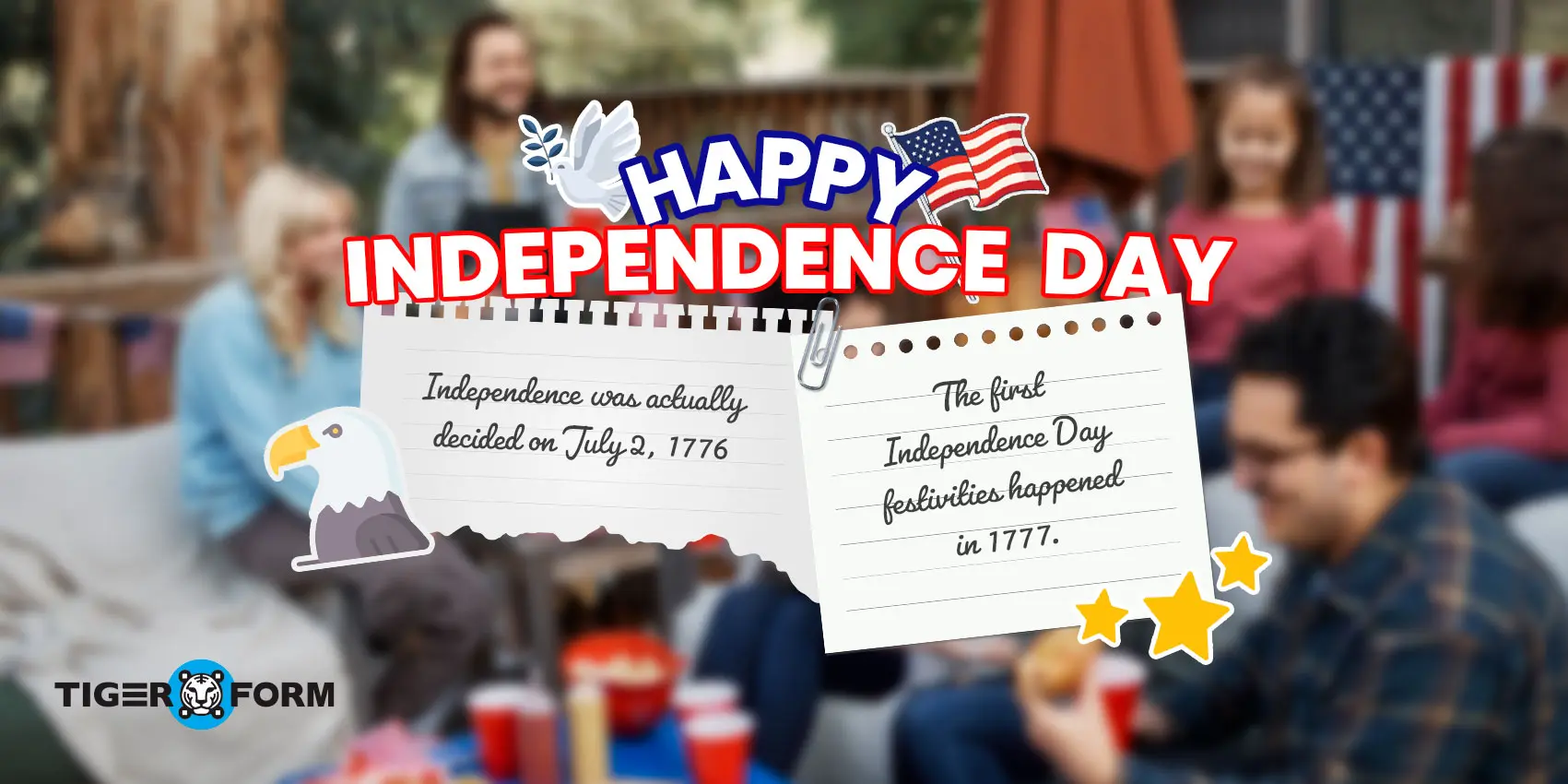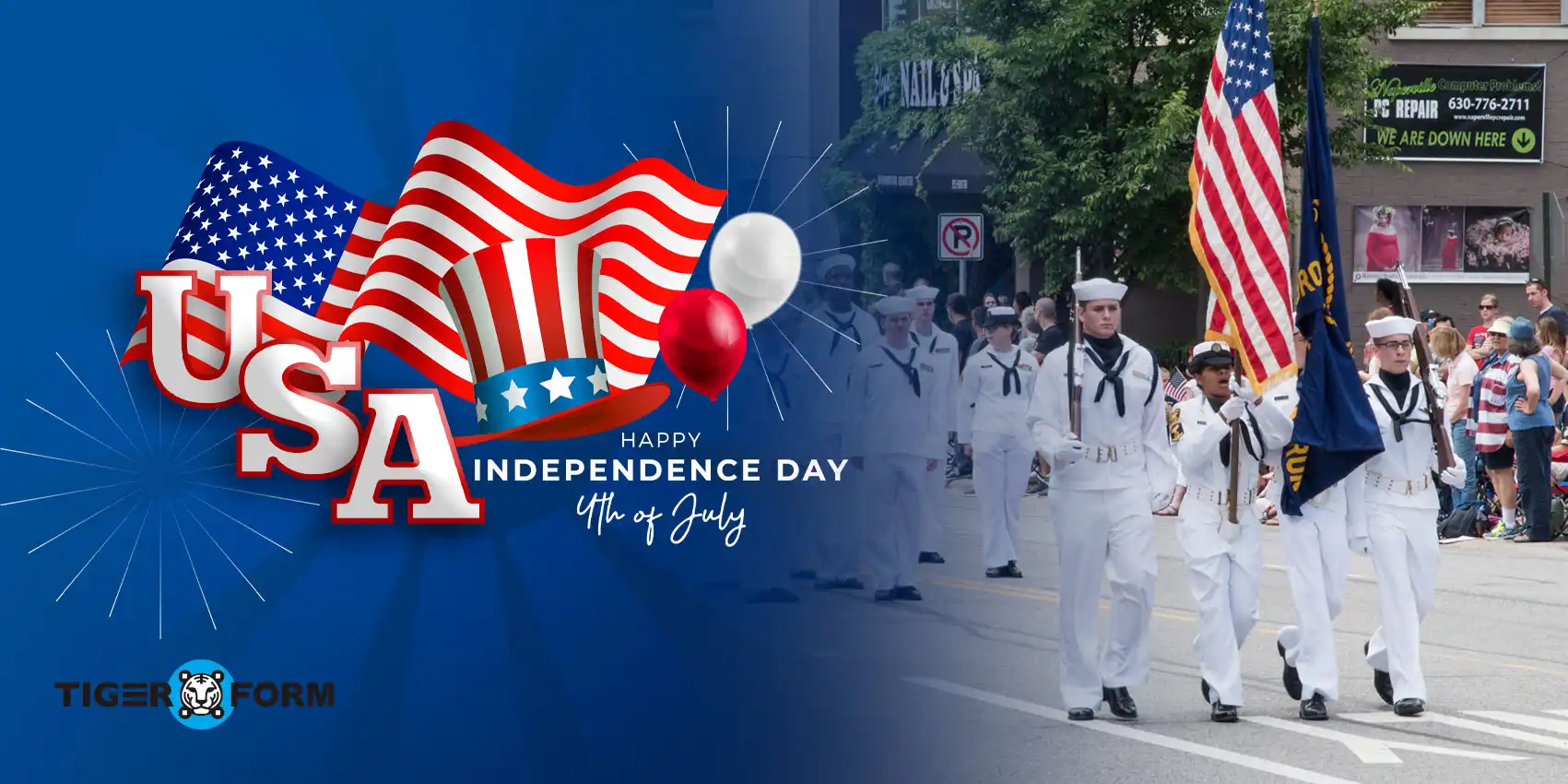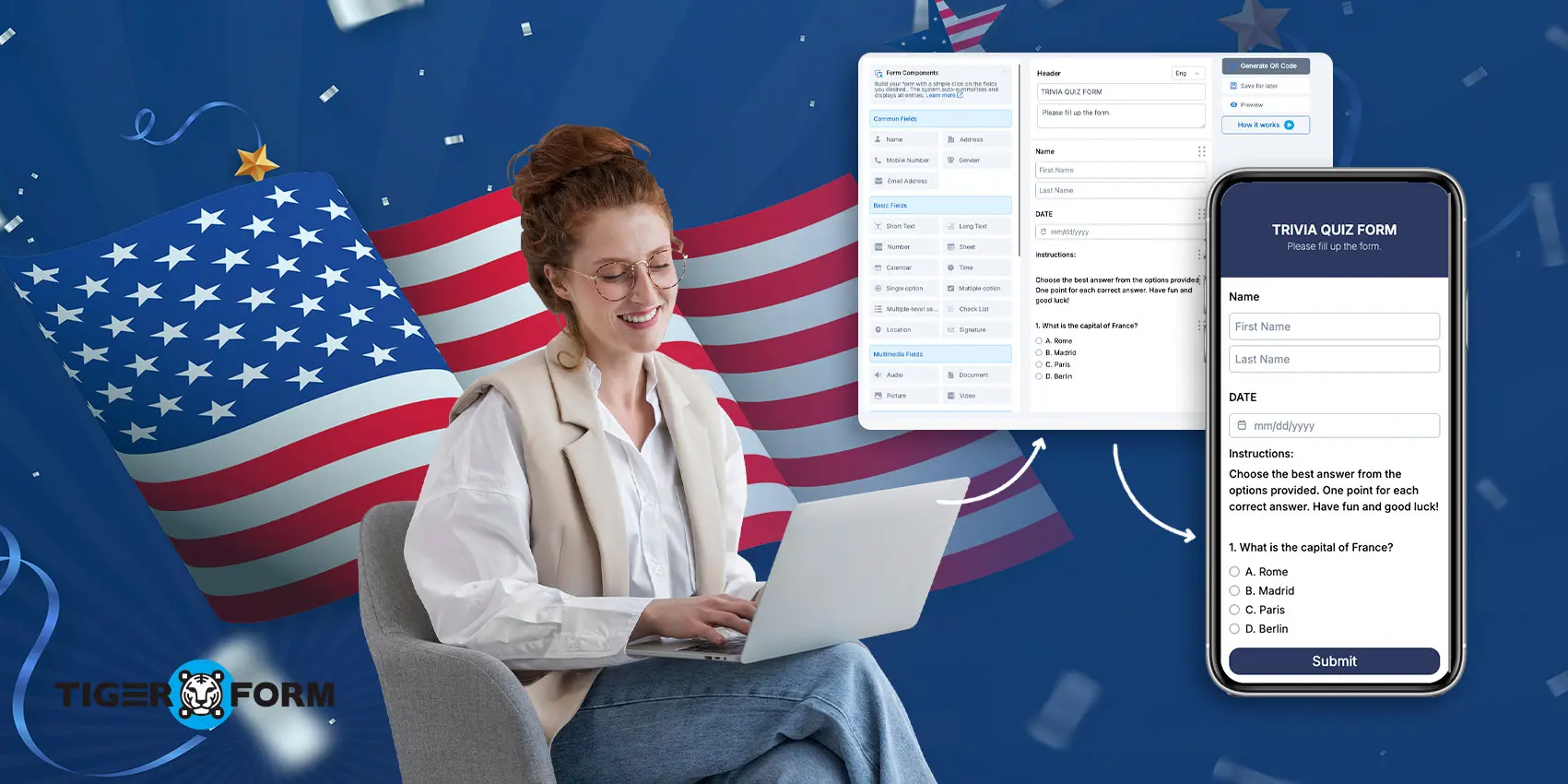
As we welcome another year of freedom, we have listed 4th of July trivia tidbits to tickle your patriotism. But before we amaze ourselves with surprising facts, let’s look back at the historical events that led to the celebration of Independence Day.
Why we celebrate the 4th of July: A quick look back
Long before fireworks lit up the July sky and celebrations became tradition, America’s Independence Day was born out of struggle and an unyielding vision for freedom.
Colonial tensions boil over
By the mid-1700s, thirteen British colonies in North America had grown restless under the heavy hand of the British Crown. High taxes, imposed without any local representation, woke widespread resentment.
The Stamp Act and the Townshend Acts forced colonists to pay for war debts and imperial ambitions in which they had little say. For many, it wasn’t just about taxes, it was about the right to self-govern and the promise of liberty that seemed forever out of reach under British rule.
The road to revolution
Tensions tightened even more in events like the 1770 Boston Massacre and the 1773 Boston Tea Party, where colonists dumped chests of British tea into the harbor in protest. These sparks ignited an open conflict when firing at Lexington and Concord in April 1775 happened (the first battles of the Revolutionary War).
Yet even as war raged on, not all colonists agreed on breaking away completely. Many hoped for reconciliation. But the ideas of freedom and self-determination grew stronger. Thomas Paine’s influential pamphlet Common Sense convinced many that true independence was necessary and inevitable.
Independence declared
At last, on July 2, 1776, the Continental Congress voted to claim independence from Britain. Two days later, on July 4, they formally adopted Thomas Jefferson’s Declaration of Independence: a bold proclamation that the colonies were now free and self-governing states.
So, to deeply commemorate the Declaration of Independence, here are 75 July 4th trivia facts you can use to create fun quizzes or random question surveys this holiday!
Founding trivia
- Independence was actually decided on July 2, 1776; July 4 marks the Declaration’s adoption.
- The Declaration was first publicly read on July 8, 1776, in Philadelphia’s State House Yard and is still reenacted today.
- The original 13 colonies were Massachusetts, New Hampshire, Rhode Island, Connecticut, New York, Pennsylvania, Delaware, New Jersey, Maryland, Virginia, North Carolina, South Carolina, and Georgia.
- The first Independence Day festivities happened in 1777, with fireworks despite the raging war.
- The White House’s first Fourth of July celebration was in 1801 under President Thomas Jefferson.
- Massachusetts was the first to make it an official holiday.
- The Declaration first appeared in print in The Pennsylvania Evening Post on July 6, 1776, quickly spreading the news.
- America’s population was about 2.5 million in 1776; now it exceeds 330 million.
- The original “Dunlap Broadsides” were printed overnight on July 4–5, 1776; about 200 copies were made.
Historical events and dates
- During World War II, the Declaration, Constitution, and Bill of Rights were secretly kept at Fort Knox for protection.
- On July 4, 1962, President John F. Kennedy spoke in Philadelphia about reinforcing ties with democratic Europe.
- Bristol, Rhode Island, has the nation’s longest-running Fourth of July celebration, dating back to 1785.
- After hearing the Declaration in New York on July 9, 1776, Patriots pulled down King George III’s statue, which later melted into musket balls.
- Founding Father Thomas Jefferson long resented edits that softened the Declaration, especially removing his anti-slavery passage.
- When fighting began in 1775, few colonists supported complete independence, and radicals were in the minority.
- Frederick Douglass’s 1852 speech “What to the Slave Is the Fourth of July?” exposed the irony of celebrating freedom while slavery persisted.
- Most final signatures were added on August 2, not July 4.
Famous personalities
- Benjamin Franklin was the oldest signer of the Declaration, at 70 years old.
- Thomas Lynch Jr. and Edward Rutledge were the youngest signers, just 26.
- Eight signers of the Declaration were actually born in the United Kingdom.
- John Hancock’s famous signature inspired the phrase “Put your John Hancock here.”
- Richard Stockton, captured and mistreated by the British, became the only signer to renounce the Declaration.
- Calvin Coolidge is the only U.S. president born on July 4, 1872.
- Three presidents died on July 4: John Adams, Thomas Jefferson (both in 1826), and James Monroe (1831).
- “The Star-Spangled Banner,” written during the War of 1812, became the national anthem in 1931.
Places and artifacts
- The Declaration has been sealed in protective cases since 1951; it now rests in an argon-filled titanium chamber.
- The Washington Monument’s cornerstone was laid on July 4, 1848. Its construction was delayed partly because a stone donated by the Pope sparked political controversy.
- The Statue of Liberty’s tablet bears “July IV MDCCLXXVI”, the date of U.S. independence.
- Mount Rushmore was meant to show presidents from head to waist, but funding cuts scaled it back.
- Jefferson drafted the Declaration on a portable writing desk — his “laptop” of the era.
- Jefferson’s lap desk was custom-made by Philadelphia cabinetmaker Benjamin Randolph.
- The Liberty Bell rang for the Declaration’s first public reading on July 8, not July 4.
- The Liberty Bell was hidden in Allentown during the Revolution to keep it from the British.
- The Liberty Bell has an inscription that reads, “Proclaim LIBERTY Throughout all the Land unto all the Inhabitants Thereof.”
- Seward, Nebraska, is Congress’s “Official Fourth of July City–Small Town USA,” drawing over 40,000 visitors annually.
- Francis Hopkinson designed the first official U.S. flag of 13 stars and three stripes 1777.
- In 1958, teenager Robert G. Heft designed the current 50-star flag for a school project, anticipating Alaska and Hawaii’s statehood.
- A simple upside-down label on the back of the Declaration reads: “Original Declaration of Independence dated 4th July 1776.”
- Mount Rushmore took 14 years to carve, from 1927 to 1941.
- Today, Mount Rushmore remains a popular patriotic destination on July 4.
Traditions and celebrations
- Congress made July 4 an unpaid federal holiday in 1870; it didn’t become a paid holiday until 1938.
- John Adams believed the holiday should be marked with fireworks, parades, and celebrations — and that it should really be on July 2!
- Serving salmon with peas was once a classic Independence Day meal in New England.
- Each July 4, the Liberty Bell is tapped 13 times to honor the original colonies since it is too fragile to ring.
- Adams refused invitations to Fourth of July events, insisting July 2 was the actual Independence Day.
- The first organized celebrations in 1777 included a 13-gun salute — a tradition that evolved into today’s “Salute to the Union.”
- The U.S. flag has had 27 official versions; the original had 13 stars in a circle.
- The 50-star flag became official on July 4, 1960, after Hawaii joined the Union.
- By custom, the flag is displayed from sunrise to sunset — or 24 hours if properly lit.
- The Liberty Bell’s famous crack actually developed decades later, in 1846, during George Washington’s birthday celebration.
- The nickname “Uncle Sam” dates back to the War of 1812. It is named after the meat packer Samuel Wilson.
- Apple pie symbolized American pride during the 19th and 20th centuries.
- The Nathan’s Famous Hot Dog Eating Contest has been held every July 4 since 1916.
- Joey Chestnut holds the men’s world record: 76 hot dogs eaten in 10 minutes.
- Miki Sudo holds the women’s record with 51 hot dogs.
Modern-day Independence Day

- Americans spend about $3.87 billion on alcohol for July 4 festivities each year.
- Roughly 150 million hot dogs are consumed — enough to stretch across the U.S. five times.
- Around 16,000 fireworks shows take place nationwide every year.
- Americans spend over $1 billion annually on fireworks.
- Macy’s fireworks in New York City, launched in 1976 for the Bicentennial, remain the nation’s largest display.
- The National Retail Federation estimates that about 86% of Americans celebrate Independence Day.
- Average food spending per person for July 4, 2025, is projected at $92.44.
- Total Independence Day spending in 2025 is expected to hit $8.9 billion.
- AAA predicts over 72 million people will travel at least 50 miles for the holiday.
Best of the best facts
- July 4 celebrations generate more than $6 billion in spending on food, travel, and festivities.
- It took Jefferson 17 days to draft the Declaration.
- In the late 1800s and early 1900s, fireworks injuries often caused deadly “Fourth of July tetanus.”
- George Washington once gave his troops double rations of rum for Independence Day.
- “Yankee Doodle,” once a British insult, became a defiant American song.
- On July 4, 2023, a set of quadruplets was born: two boys and two girls, each about 4 pounds. This is an uncanny celebration of the number four!
Landmark events on July 4
- The U.S. Military Academy at West Point was established on July 4, 1802.
- The Louisiana Purchase was publicly announced on July 4, 1803.
- Vicksburg, Mississippi, surrendered to Union forces on July 4, 1863: a central Civil War turning point.
- The U.S. formally recognized Philippine independence on July 4, 1946, before moving it to June 12.
- On July 4, 2012, scientists confirmed the discovery of the Higgs boson particle, and in 2013, the Statue of Liberty reopened after Hurricane Sandy.
How can Independence Day be made engaging and memorable?

Trivia quizzes using digital form builders
One engaging yet challenging way to celebrate the July 4th event is through games or quizzes. Trivia questioning games, like multiple-choice questions or flashcards, are a fun way to show patriotism by recalling the events and happenings of the past. You can hold online games or use online forms to deliver your trivia questions and games for a more modern method.
Form creators like TIGER FORM are useful platforms and tools for 4th of July trivia games. One unique feature of the platform mentioned is its QR code integration. With this feature, you can let your participants scan a QR code and be led automatically to your quiz forms. With this event, game participants will showcase their patriotic knowledge.
Heritage walks and historical tours
Organize or join groups that hold museum tours or historical tours that commemorate the history behind the Declaration of Independence. You can use and share patriotic trivia questions about Independence Day at events like these. You can also learn amazing and lesser-known facts you may not have heard before from other participants. To help you organize events like this, you can use free event registration platforms and QR code form generators to manage participant registration more efficiently.
Acts of community service
You can organize or join volunteering groups to clean memorial statues related to the history of Independence Day. This way, you can help with the cause of volunteer cleaning commemoration while showing your patriotism by remembering the events while volunteering. A volunteer registration form tool would be helpful for this 4th of July event for seamless event management.
Commemoration parades
As predicted by John Adams, Independence Day will be celebrated with parades and illuminations. Many parades will be held on July 4th. You can either join groups or communities that hold parades commemorating the celebration. This event will be engaging and memorable as you meet new people and discuss your patriotic ideas related to the events.
Light shows and fireworks
One of Independence Day’s biggest and most famous fireworks shows is the Macy’s Fireworks show in New York City. You can join this by viewing areas like Montgomery Street and Madison Street. If you are far and do not want to travel, you can hold one and invite family, friends, and your community. This way, you can celebrate the Declaration of Independence brightly and memorably.
Host fun 4th of July trivia games using simple online forms
And there you have it, 75 mind-blowing Independence Day trivia to spark your patriotism and bring extra fun to your Independence Day celebrations.
From the struggle for freedom to the fireworks we enjoy today, each fact reminds us how this celebration came to be.
And to make this holiday even more memorable, turn this trivia into fun quizzes. Share the trivia questions and test your guests using QR code forms, keeping the spirit of independence alive in a truly engaging way!
Happy Independence Day from TIGER FORM!

Sources:
https://www.britannica.com/topic/American-colonies
https://nyassembly.gov/member_files/063/20050930c/
https://greenlight.com/learning-center/fun-facts/4th-of-july-fun-facts
https://www.wired.com/2009/07/dayintech-0704/
https://time.com/5614930/frederick-douglass-fourth-of-july/
https://militarymakeover.tv/the-beauty-behind-the-cracked-liberty-bell/
https://nrf.com/research-insights/holiday-data-and-trends/independence-day/independence-day-data-center
https://www.rd.com/list/things-you-didnt-know-about-independence-day/
https://greenlight.com/learning-center/fun-facts/4th-of-july-fun-facts
https://callmsi.com/4th-of-july-trivia/
https://www.investopedia.com/fourth-of-july-spending-on-food-is-expected-to-decline-this-year-8673003
https://newsroom.aaa.com/2025/06/july4forecast/
https://games.ktlg.ee/pc-game/130157-the-colonists-v1-0-2-3-download-free.html
https://cdnbookworm.blogspot.com/2013/04/
https://www.theconstitutional.com/blog/2019/07/01/remembering-president-john-f-kennedy-speaking-independence-hall-july-4-1962
https://founders.archives.gov/documents/Adams/04-02-02-0016
https://ssec.si.edu/stemvisions-blog/evolution-fireworks
https://www.history.com/articles/july-4th
https://www.cdc.gov/mmwr/preview/mmwrhtml/mm5325a5.htm
https://www.youtube.com/watch?v=1OW4uyGngCw
https://newengland.com/food/salmon-and-peas/
https://www.nehawkanebraska.com/index.php/nehawka-pages/38-nehawka-newsletter-28-june-2017
https://nmaahc.si.edu/explore/stories/historical-legacy-juneteenth
https://www.nps.gov/subjects/npscelebrates/juneteenth.htm
https://ridgefieldhistoricalsociety.org/you-can-ring-your-bells/
